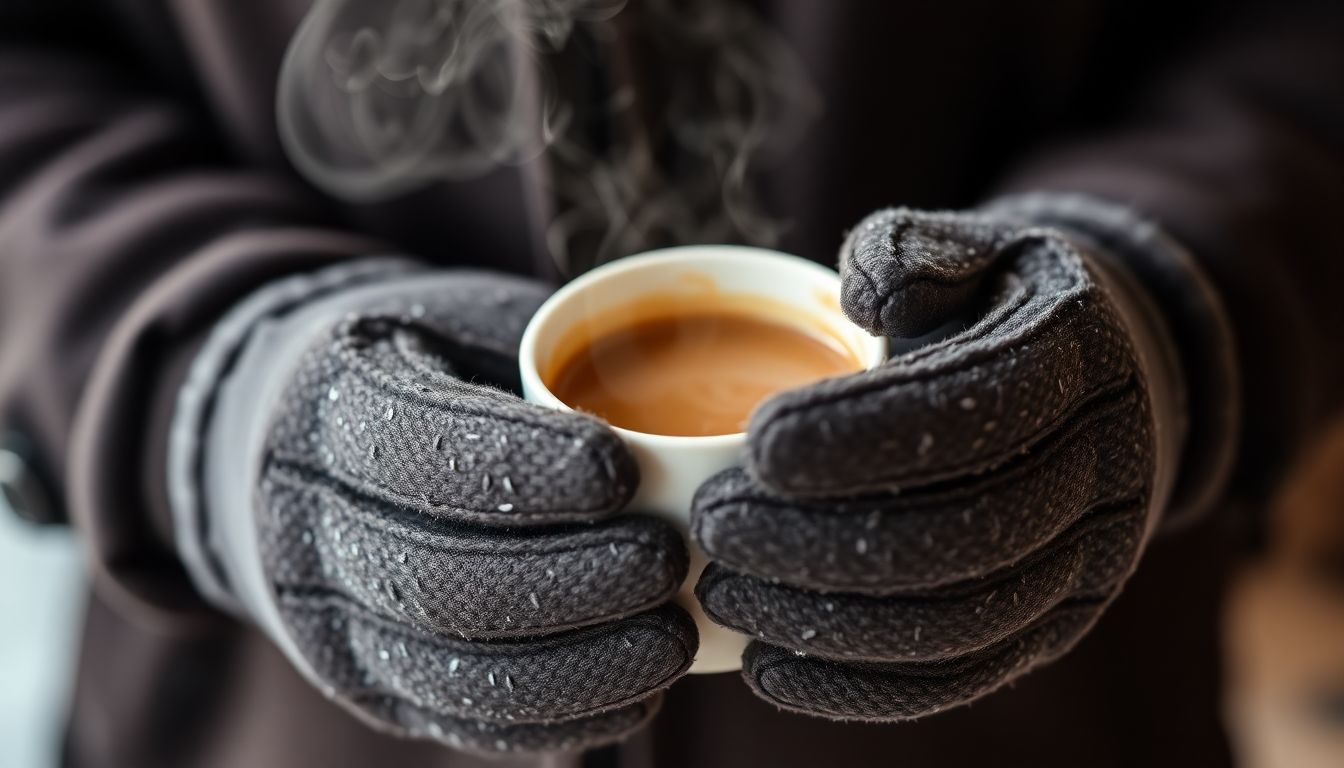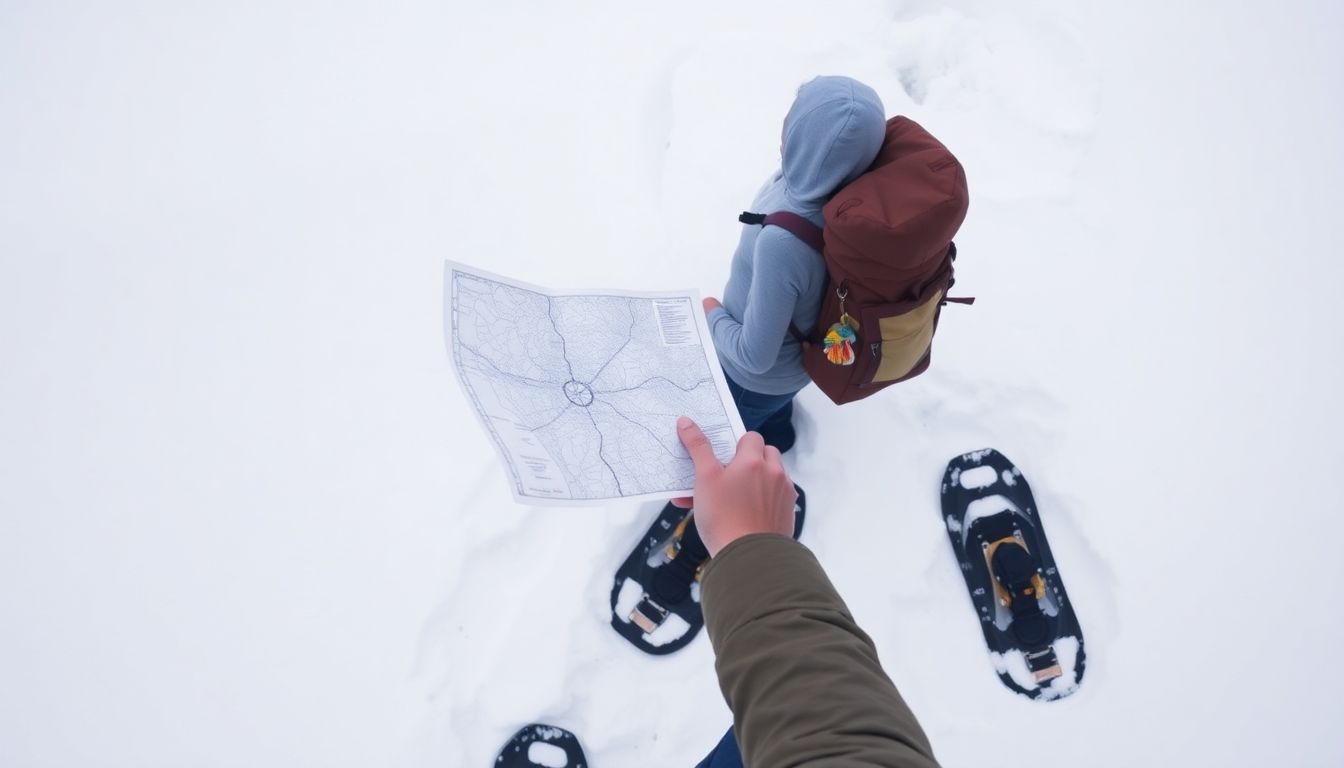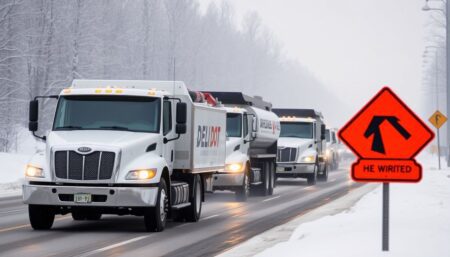Imagine this: you’re miles away from civilization, the sun has set, and the temperature is plummeting. The wind howls, and the snow crunches underfoot as you trudge through the deepening powder. This isn’t a scene from a movie; it’s a reality for many who find themselves unprepared in extreme cold. But what if you could turn this daunting scenario into a challenge you’re ready to face? Welcome to ‘Prepper’s Guide to Surviving in Extreme Cold: Winter Survival Skills’, where we promise to equip you with the knowledge and tactics to not just survive, but thrive in the harshest of winter conditions.
According to the National Weather Service, extreme cold can lead to frostbite and hypothermia within minutes. In fact, between 1999 and 2011, an average of 1,679 people died each year due to excessive cold in the United States alone. These statistics serve as a stark reminder that winter preparedness is not a luxury, but a necessity. So, do you want to be a victim of the cold, or a conqueror?
Agree with us when we say that the thought of being stranded in a blizzard is enough to send shivers down your spine. But what if we told you that with the right knowledge and preparation, you could turn that fear into confidence? In this comprehensive guide, we’ll delve into the art of extreme cold survival, exploring everything from understanding the science behind cold weather to mastering winter-specific first aid. We’ll also share cold weather tactics used by seasoned survivalists, and provide practical tips on how to prepare your gear and supplies for the harshest conditions.
By the end of this article, you’ll not only gain a deep understanding of how to survive in extreme cold, but you’ll also learn how to enjoy the great outdoors during winter. So, whether you’re a seasoned prepper, an avid outdoorsman, or simply someone who wants to be ready for whatever winter throws your way, this guide is for you. Let’s embark on this journey together, and let’s make extreme cold survival our new winter adventure.
Mastering Cold Weather Tactics for Extreme Cold Survival
Embarking on a journey into the heart of winter’s chill, one must become a master of cold weather tactics to ensure survival in extreme conditions. The first line of defense against the relentless cold is understanding and dressing in appropriate layers. The base layer, closest to the skin, should be made of moisture-wicking materials like wool or synthetic fabrics to keep sweat away from the body. The middle layer, or insulation layer, should be thick and warm, preferably made of down or fleece, to trap heat. The outer layer, or shell, should be windproof and waterproof to protect against the elements. Gloves and hats are also crucial, with mittens often being warmer than gloves due to their ability to keep fingers together. Staying dry is paramount, so it’s essential to carry extra clothing and change out of wet garments as soon as possible. Maintaining a positive body temperature is not just about clothing; it’s also about staying active. Regular exercise, even in the cold, can help maintain warmth. However, it’s crucial to balance this with adequate rest and hydration. In extreme cold, the body’s demand for water increases, so it’s important to drink plenty of fluids, even if you don’t feel thirsty. Food also plays a significant role in maintaining body heat. High-energy, high-fat foods are ideal as the body burns these to create heat. Lastly, understanding the environment is key. Knowing how to build a shelter, start a fire, and navigate in the cold can mean the difference between life and death. With these tactics mastered, one can face the harshest of winters with confidence and resilience.

Understanding Hypothermia and Frostbite
Imagine you’re hiking in the snow-capped mountains, the wind nipping at your heels. As the temperature drops, so does your body’s core temperature, a condition known as hypothermia. But what exactly is happening inside your body? Hypothermia occurs when your core body temperature falls below 35°C (95°F), typically due to prolonged exposure to cold environments. Your body responds by constricting blood vessels to preserve heat, but this also reduces blood flow to your extremities, setting the stage for frostbite. Frostbite, on the other hand, is a more severe condition that occurs when ice crystals form in your tissues, damaging cells and causing permanent damage if left untreated. It usually affects exposed skin, such as your fingers, toes, nose, and ears. The danger lies in the fact that frostbite can lead to tissue death and even amputation if not treated promptly. The symptoms of hypothermia and frostbite can help you differentiate between the two. Hypothermia symptoms include shivering, confusion, slurred speech, drowsiness, and in severe cases, loss of consciousness. Frostbite, however, presents with numbness, tingling, or a burning sensation in the affected area, followed by a loss of feeling and a white, waxy appearance of the skin. In severe cases, the skin may turn black, indicating tissue death. Preventing these conditions is crucial, especially when spending time in cold environments. Dress in layers, ensuring your outer layer is waterproof and windproof. Protect your extremities with insulated gloves, socks, and boots. Take regular breaks to warm up and avoid sweating, as wet clothes can accelerate heat loss. If you suspect hypothermia or frostbite, seek medical attention immediately. Until then, move the person to a warm environment, remove any wet clothing, and gently rewarm the affected areas. But remember, never rub or massage frostbitten areas, as this can cause further damage. In the grand scheme of things, understanding and recognizing the signs of hypothermia and frostbite can mean the difference between a safe, enjoyable outdoor experience and a life-threatening situation. So, the next time you’re planning a winter adventure, make sure to pack your knowledge along with your gear.

Layering: The Key to Staying Warm
In the heart of winter, when the chill is as relentless as a polar bear’s hug, the secret to staying warm isn’t just about piling on the thickest coat you can find. No, the key to surviving the cold is a well-orchestrated dance of fabrics and clothing items, a symphony of layers that work together to create a thermal barrier against the elements. This is the art of layering.
The three-layer system is the maestro of this winter symphony. Let’s dive into each layer and its role.
The base layer, the first violins, is responsible for wicking moisture away from your skin. This is your first line of defense against the cold, and it’s crucial to choose the right fabric. Synthetic materials like polyester or wool are excellent choices. They draw sweat away from your body, preventing that nasty chill that comes with damp clothes. A long-sleeved shirt and long johns are typical base layer items. Merino wool is a popular choice due to its natural odor resistance and ability to keep you warm even when wet.
The mid layer, the cellos and basses, provides insulation. This is where you’ll find fleece, down, or wool jackets and vests. These materials trap air, creating a pocket of warmth around your body. The key here is to choose a material that compresses well, so you can still move around easily. A down jacket is an excellent choice, offering a high warmth-to-weight ratio.
The outer layer, the conductor, is your shield against the wind and snow. This is your waterproof and windproof jacket or pants. Gore-Tex is a popular choice, as it allows sweat to escape while keeping the elements out. This layer should be loose enough to fit over your mid layer without restricting movement.
Now, you might be thinking, ‘That’s a lot of layers! I’ll look like the Michelin Man!’ But remember, each layer serves a purpose, and when they work together, they create a powerful force against the cold. So, embrace the layers, and you’ll be dancing in the snow instead of shivering on the sidelines.

Insulating Your Extremities
When the mercury drops, our bodies prioritize keeping our vital organs warm, which is why our extremities
- hands, feet, and head
- are the first to feel the chill. These areas have less muscle and fat to generate heat and insulate, making them more susceptible to cold injuries like frostbite. To protect these vulnerable zones, let’s delve into some detailed tips and gear recommendations.
The head is like a heat radiator, losing up to 40% of our body heat through it. A well-fitted, insulated hat is your first line of defense. Consider a merino wool or synthetic beanie for everyday use, or a down or synthetic insulated cap for extreme conditions. Don’t forget, you can also use a buff or balaclava for added protection.
Hands are next in line. They’re constantly in use, making it challenging to keep them warm. Start with a good pair of insulated gloves. For mild conditions, consider gloves with removable liners, allowing you to adjust warmth as needed. In extreme cold, opt for gloves with removable liners and an outer shell, or mittens, which provide better warmth due to their larger surface area. Always ensure your gloves are waterproof and breathable to prevent sweat from turning into ice.
Feet are the foundation of our heat loss story. They’re far from the heart, have less insulation, and are constantly in contact with the cold ground. Start with a good pair of wool or synthetic socks. Avoid cotton, as it absorbs moisture and conducts heat away from your feet. Consider using sock liners to wick away moisture and provide an extra layer of insulation. For your footwear, opt for insulated, waterproof boots. Look for boots with removable liners, allowing you to dry them out if they get wet. Also, consider using foot warmers, which can provide up to 12 hours of warmth.
Lastly, don’t forget about hand and toe warmers. These chemical packets can provide a significant boost of warmth. Place them in your gloves, boots, or even in your pockets. Just remember to follow the instructions to avoid burns.
In addition to these gear recommendations, there are a few techniques to keep your extremities warm. Keep moving
- this generates heat. If you’re stationary, perform some light exercises to keep the blood flowing. Also, stay hydrated and eat well
- your body needs fuel to generate heat.
By following these tips and choosing the right gear, you can keep your hands, feet, and head warm, ensuring you stay safe and comfortable in the cold.

Shelter Building in Extreme Cold
In the harsh embrace of extreme cold, the importance of shelter cannot be overstated. It’s not just about comfort; it’s about survival. A well-built shelter can mean the difference between a safe, warm night and a dangerous, freezing one. Today, we’re going to explore the art of building a simple yet effective snow shelter, also known as a quinzhee. This shelter is not only easy to construct but also provides excellent insulation against the biting cold.
The first step in building a snow shelter is finding a suitable location. Look for a spot that’s protected from the wind and, if possible, has a slight slope to allow for water runoff. Once you’ve found your spot, it’s time to start gathering materials. You’ll need plenty of snow, of course, but also some form of insulation like pine boughs or other evergreen branches. These will help to trap air and provide extra warmth.
Now, let’s dive into the construction process. Start by building a large pile of snow, at least 6 to 8 feet in diameter and about 4 to 5 feet high. This will be the foundation of your shelter. Once your pile is big enough, let it sit for a while to allow the snow to settle and harden.
Next, you’ll need to hollow out the inside of your snow pile. Start by creating an entrance tunnel on the downhill side. This tunnel should be narrow enough to retain heat but wide enough for you to crawl through. Once you’re inside the pile, start hollowing out the center to create a living space. Be careful not to hollow it out too much, as this can weaken the structure.
Now, it’s time to insulate your shelter. Lay a layer of pine boughs on the floor of your shelter to provide a barrier between you and the cold snow. You can also use these boughs to create a bed, making your shelter even more comfortable.
Finally, it’s time to maintain a safe, warm environment inside your shelter. Never use candles or open flames inside, as this can cause a fire. Instead, use your body heat to warm the shelter. Once you’re inside, block the entrance with a pile of snow to retain heat. Remember, it’s important to ventilate your shelter to prevent carbon monoxide buildup. You can do this by leaving a small opening at the top of the entrance tunnel.
And there you have it! A simple, effective snow shelter that can keep you safe and warm in extreme cold. Just remember, building a shelter is only one part of winter survival. Always be prepared with the right gear and knowledge to ensure a safe and enjoyable experience in the great outdoors.

Fire Making in Harsh Conditions
Starting a fire in harsh conditions, particularly in extreme cold and wet, can be a daunting task. The challenges are multifold: low temperatures slow down chemical reactions, making it harder for fire to ignite and spread; moisture in the air and on materials can douse flames or prevent them from starting altogether; and the dampness can make it difficult to find and prepare suitable tinder. However, with the right knowledge, preparation, and techniques, it’s possible to overcome these obstacles and create a life-saving fire.
Firstly, preparation is key. Choose your location wisely, seeking shelter from wind and rain, and avoid low-lying areas prone to frost or waterlogging. Gather materials beforehand, if possible, to minimize exposure to harsh conditions. Your tinder should be dry and combustible. Look for materials like birch bark, cedar bark, or dry leaves, and keep them in a waterproof container or your clothing to maintain their dryness.
Fire starters are invaluable in harsh conditions. Matches, lighters, and ferro rods are common choices, but ensure they’re waterproof and easily accessible. If using matches, strike them away from your body to avoid melting snow or ice onto your clothing.
Building an effective fire structure is crucial. Start with a small platform of green branches to insulate your fire from the cold ground. Then, create a tepee structure with your tinder, leaving an opening on the side you’ll light. Gradually add kindling, then small sticks, and finally larger logs, maintaining the tepee shape to allow oxygen flow and heat circulation.
Once lit, maintain your fire by feeding it dry materials. Keep it small and controlled, using a poker or stick to move logs and encourage air flow. If it starts to rain, use a tarp or poncho to create a makeshift shelter over your fire. Remember, safety is paramount. Always keep a safe distance from your fire and ensure it’s completely extinguished before leaving or going to sleep.
In extreme conditions, it might take longer to start and maintain a fire. Patience and persistence are vital. With the right techniques and materials, you can conquer the challenges of fire making in harsh conditions.

Staying Hydrated and Nourished
In the frosty embrace of extreme cold, staying hydrated and nourished is not just a comfort, but a necessity. The human body is a remarkable machine, but it’s one that requires regular fueling and hydration to keep running smoothly, especially in harsh winter conditions.
The first order of business is hydration. In cold environments, our bodies work overtime to keep us warm, leading to increased water loss through respiration. Snow, though abundant, is not immediately drinkable. To turn it into life-saving water, follow these steps:
- Collect clean, fresh snow. Avoid yellow or discolored snow, as it may contain pollutants or animal urine.
- Pack the snow into a container and place it in a insulated bag or wrap it in clothing to protect it from direct sunlight and heat.
- Melt the snow slowly. You can do this by placing the container in a cool part of your shelter or tent, or by using a heat source, ensuring the container is heat-resistant.
- Boil the melted snow to purify it before drinking. This will kill any bacteria or viruses that may be present.
Once you’ve secured your water supply, it’s time to focus on nourishment. In cold environments, our bodies burn more calories to maintain our core temperature. This means we need to consume more calories to maintain our energy levels. Here are some tips for choosing the right foods:
- Opt for high-energy, non-perishable foods. These include nuts, dried fruits, jerky, and energy bars.
- Choose foods that are easy to digest. In cold conditions, our bodies prioritize keeping our core warm over digestion, so opt for foods that are gentle on your stomach.
- Include foods rich in vitamins and minerals. These are crucial for maintaining your immune system and overall health in harsh conditions.
Maintaining a balanced diet in extreme cold can be challenging, but it’s not impossible. Aim for a mix of carbohydrates for energy, proteins for muscle repair and growth, and healthy fats for insulation. Remember, it’s not just about what you eat, but also when you eat. Regular, small meals can help maintain your energy levels and prevent overeating, which can lead to discomfort in cold conditions.
Lastly, don’t forget about hydration. Even if you’re not feeling thirsty, your body needs water to function properly. Aim to drink at least 2-3 liters of water a day, more if you’re exerting yourself physically. Staying hydrated and nourished in extreme cold is a balancing act, but with the right knowledge and preparation, it’s a challenge you can overcome.

Navigation and Travel in Deep Snow
Navigating and traveling through deep snow can be a challenging yet rewarding experience, offering a unique blend of beauty and adversity. The primary challenge lies in the terrain’s transformation, where familiar landmarks can be obscured, and the snow’s depth can hinder progress. The first hurdle is visibility; snow can reflect light, causing whiteout conditions, making it difficult to distinguish the horizon from the sky. Additionally, deep snow can slow down your pace significantly, as each step requires more effort to lift your feet out of the snow. Frostbite and hypothermia are also constant threats, making time management crucial.
To navigate effectively, a combination of tools and techniques is essential. Traditional maps and compasses remain invaluable, especially when used together. Before setting out, study your map to identify potential hazards and plan your route. In the field, use your compass to take bearings and ensure you’re staying on course. However, electronic devices like GPS have become increasingly popular and accurate. They can provide real-time location data and help track your progress. Always carry extra batteries and consider bringing a backup device.
Efficient movement through deep snow requires the right equipment and technique. Snowshoes are a must, as they distribute your weight over a larger area, preventing you from sinking into the snow. Skis can also be useful, especially in steep or rolling terrain. They allow you to glide over the snow, covering more distance with less effort. Always ensure your snowshoes or skis are securely attached and in good condition.
When moving through deep snow, maintain a steady pace and use a technique called ‘kick-turns’ to change direction. This involves planting your pole or the back of your snowshoe into the snow to pivot. If you find yourself postholing (sinking into the snow up to your knees), try to step in the same spot repeatedly to create a path. Always keep an eye on the weather and your body’s responses to cold and exertion. Staying warm, dry, and hydrated is as important as knowing where you’re going.

Mental Preparedness: Maintaining a Positive Attitude
In the stark, unforgiving realm of extreme cold, mental preparedness is not just an advantage, but a necessity. It’s the beacon that guides you through the icy labyrinth, the compass that keeps your spirits from freezing over. Maintaining a positive attitude in such harsh conditions is not about denying the cold or the fear, but about embracing them, understanding them, and using them to fuel your resilience.
The first step in this mental preparedness is acceptance. Accept that you’re cold, accept that you’re afraid. Fear is a natural response to danger, and in extreme cold, it’s a survival mechanism. But it’s how you manage this fear that makes the difference. Instead of letting it consume you, channel it into action. Fear can be a powerful motivator, driving you to seek shelter, to keep moving, to stay alive.
Managing anxiety is another crucial aspect. The isolation, the uncertainty, the relentless cold
- they can all contribute to anxiety. But remember, you’re not alone. You have your mental fortitude, your preparation, and your will to survive. Break down your situation into manageable tasks. Instead of thinking about the endless expanse of snow, focus on the next step, the next breath, the next minute. This mindfulness can help calm your anxiety and keep you grounded.
Staying motivated in harsh conditions is a challenge, but it’s not insurmountable. Remember why you’re there, what you’re fighting for. It could be the warmth of a loved one’s smile, the comfort of a familiar place, or the satisfaction of a challenge overcome. Visualize these things, hold onto them. They can be your lifeline, your reason to keep going.
Lastly, don’t forget to care for your mental health as you would your physical health. Just as you would dress in layers to keep warm, build layers of mental resilience. This could be through positive self-talk, through connecting with others (even if it’s just a voice on the radio), or through simple acts of kindness to yourself or others. Remember, every small act of positivity can help keep the cold at bay.
FAQ
What is the first and most crucial step in preparing for extreme cold survival?
How can I maintain my body heat in extreme cold?
What are some essential winter survival gear items?
- Insulated, waterproof boots with good traction
- Insulated gloves or mittens
- Insulated, waterproof jacket and pants
- Moisture-wicking base layers
- Headwear, such as a hat or balaclava, to cover your head and ears
- A reliable headlamp or flashlight with extra batteries
- High-energy, non-perishable food, and a way to melt snow for water
- A map, compass, and knowledge of how to use them
- An emergency shelter or bivy sack
- Fire-starting materials, like a lighter, waterproof matches, or a ferro rod
How can I safely start a fire in extreme cold?
- Find or create a windbreak to protect your fire from the wind
- Gather dry tinder, like small twigs, pine needles, or birch bark, and keep it dry
- Use fire-starting materials that are designed to work in cold conditions, such as waterproof matches or a ferro rod
- Create a small platform for your fire using green branches to insulate it from the cold ground
- Start with a small fire, gradually adding larger pieces of wood as it grows
- Keep your fire going at all times, as relighting it can be difficult in extreme cold
What are some cold weather tactics for finding or building a shelter?
- Look for natural shelters, like caves, overhanging trees, or rock outcroppings, to provide immediate protection
- Build a snow cave or quinzhee by packing snow into a mound and hollowing it out
- Create a debris shelter by laying long branches on the ground and covering them with pine needles, leaves, and other insulating materials
- Use an emergency shelter or bivy sack, ensuring it’s properly ventilated to prevent condensation
- Insulate your shelter from the cold ground by laying down pine boughs or other insulating materials
- Keep your shelter small to retain heat, but large enough to move around in
How can I stay hydrated in extreme cold?
- Melt snow using a pot or a dedicated snow-melting bag, as eating snow can lower your core body temperature
- Drink small amounts of water frequently, rather than large amounts infrequently
- Carry a water bottle with an insulated cover or use an insulated hydration bladder to keep water from freezing
- Eat snow-freeze-dried meals or energy bars to replenish your fluids and provide calories
- Avoid drinking alcohol or caffeinated beverages, as they can dehydrate you
What are some signs of hypothermia and frostbite, and how can I treat them?
- Hypothermia: Signs include shivering, confusion, slurred speech, drowsiness, and loss of coordination. Treat by:
- Getting the person out of the cold and into a warm, dry environment
- Removing wet clothing and replacing it with dry, warm clothing
- Gradually warming the person using blankets, hot water bottles, or skin-to-skin contact
- Providing warm, non-alcoholic beverages
- Avoiding direct heat sources, like fireplaces or heating pads, as they can cause burns
- Frostbite: Signs include numbness, white or grayish-yellow skin, and hard or waxy skin. Treat by:
- Protecting the affected area from further cold and injury
- Gently rewarming the area using warm water (around 100-105°F or 38-41°C) for 20-30 minutes
- Avoiding direct heat, like fireplaces or heating pads
- Not rubbing or massaging the affected area
- Seeking immediate medical attention









